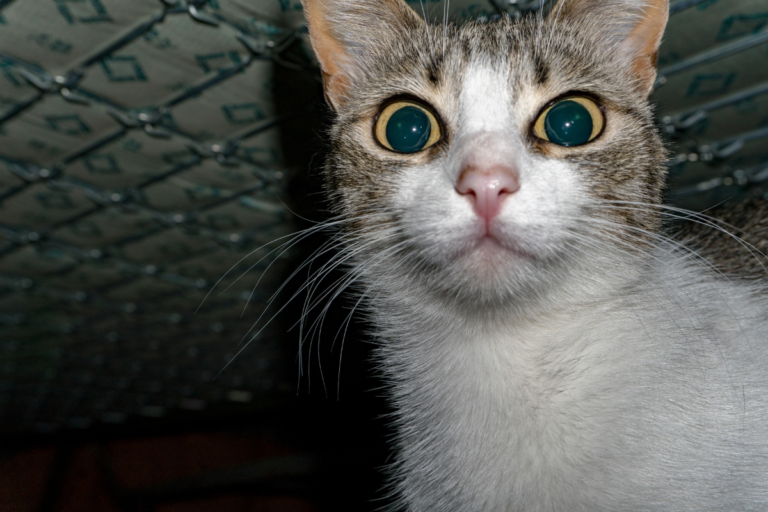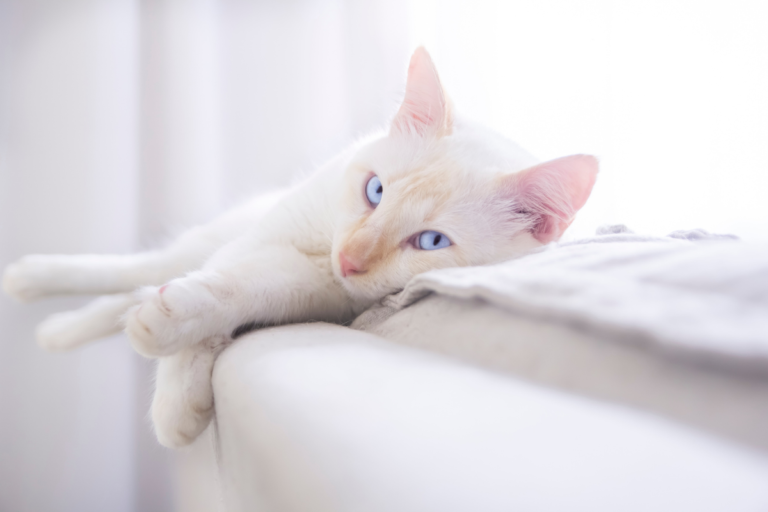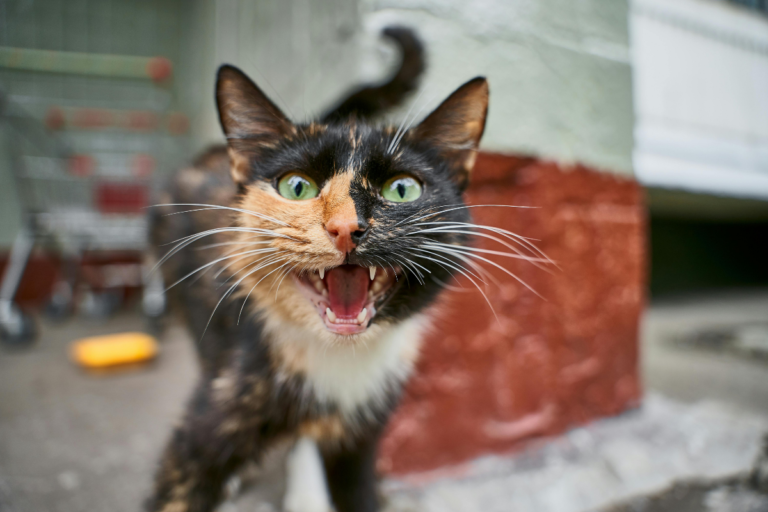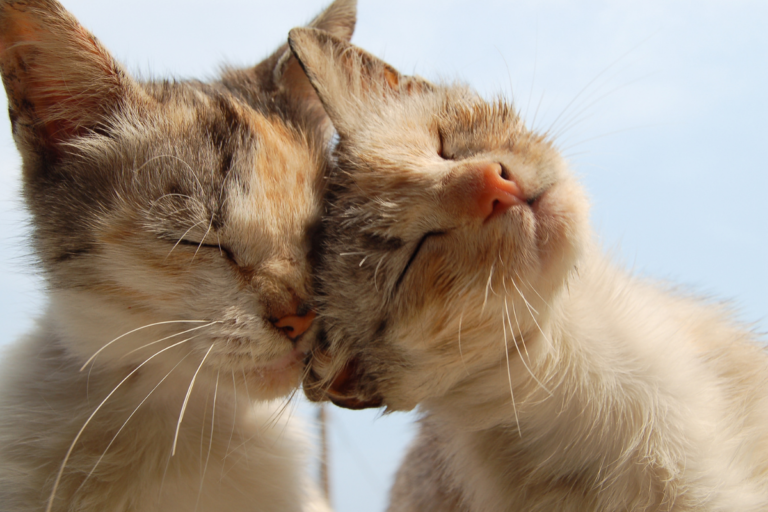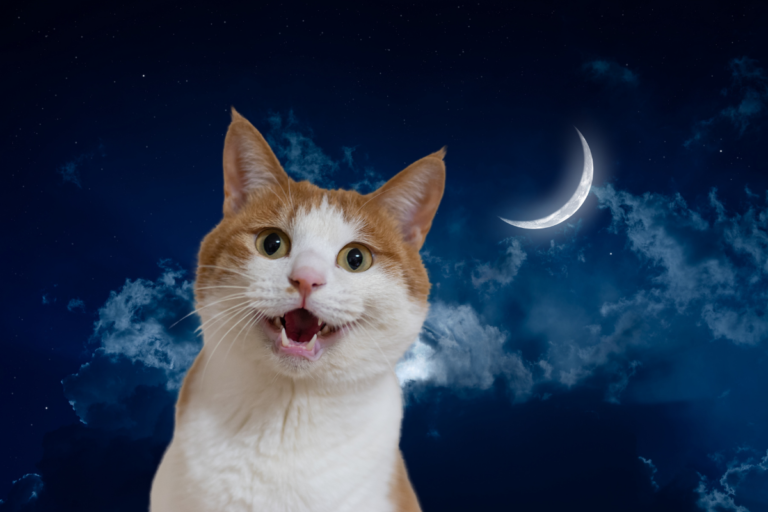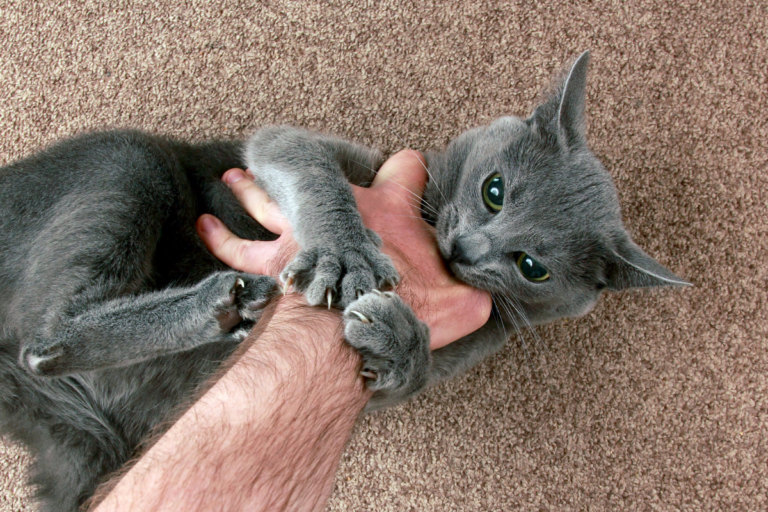Why Does My Cat Keep Chasing Its Tail: Understanding the Behavior
Understanding Tail Chasing in Cats
Ever caught your cat in the act of chasing its own tail? It’s like watching a kitty version of a dog, and sure, it’s funny, but it can also leave you scratching your head. Sometimes it’s just a silly quirk; other times, it might be screaming for attention. So, let’s figure this out together.
Natural Behavior vs. Concerning Behavior
Kittens love a good tail chase. It’s their way of honing those hunting skills while having a blast. Imagine them in a mini wilderness, tails morphing into the prey of choice during playtime. Perfectly natural and healthy, these playful antics are a staple of growing up.
But when your older cat starts this dance unexpectedly, alarm bells should ring. Sure, some grown-up cats just never grow out of it. But if your feline buddy suddenly turns into a tail-chasing machine, we could be looking at boredom, stress, or even something medically fishy. Knowing the difference can make all the difference in keeping your cat content and fit.
Common Reasons for Tail Chasing
Now, what’s got your cat all spun up? Let’s dive into the usual suspects behind this behavior so you can nip it in the bud.
-
Playfulness and Entertainment: Cats have that endless urge to hunt. Chasing tails? Think of it as their way of putting on a show and burning off those crazy energies (Catster). If your cat’s playful mood is written all over its face, then no need to sweat it.
-
Boredom or Stress: When the days turn dull, cats might chase their tails out of sheer laziness or unresolved stress. Without toys or fun activities, they might go grizzly bear on their tails just to break the monotony. Providing engaging toys and enriching playtimes can be a game changer (Catster). Check an article on cats behavior for more ideas.
-
Pain or Discomfort: Tail biting could mean your cat is hurting—think wounds, blocked glands, or skin troubles. All these could drive a kitty to chomp on its own tail. Keep an eye out for signs of discomfort—catching an infection early means getting your vet involved pronto (Catster).
-
Fleas and Itchiness: Fleas can be the root of all evil, causing your cat to itch madly, especially at its tail base. Catching those flea vibes early and getting some medical assistance will ease their frantic tail chasing. Learn more about related issues like scratching.
-
Anxiety and Compulsive Disorders: Sometimes it’s a deeper issue—stress or repetitive behaviors being acted out through tail chasing. Yes, like people, cats can get overwhelmed. Giving your furry pal some comfort and understanding can prevent things from snowballing.
| Common Reasons for Tail Chasing | Description |
|---|---|
| Playfulness | Innate hunting routines, generally harmless |
| Boredom | Missing out on fun or challenges |
| Pain | Issues from cuts, glands, or skin woes |
| Fleas | Causing unbearable itchiness |
| Anxiety | Signs of stress or repeat behaviors |
Want more handy tips on feline antics? We’ve got articles on cat head butting and cat psychology ready for your perusal.
Getting to the bottom of your cat’s tail-chasing madness means you can reel in the right solutions, whether it’s mixing up their play or picking up the phone for a vet consult. Your cat deserves a life of happiness, and knowing what makes them tick is the key to keeping them perky and purring.
Behavioral Issues in Cats
Why Cats Get Bored and Stressed
Cats are naturally curious and full of energy. When they don’t have enough to do, they can get restless or antsy. This can lead to behaviors like chasing their own tails. While it’s often just fun and games for kittens honing their hunting chops, for adult cats, it might signal they’re feeling cooped up or anxious (MRFRS).
How to Stop Tail Chasing with Play
So your cat is whirling around like a furry tornado, chasing its tail. This crazy dance is often a sign they need more action in their lives. One of the best ways to tackle this is by playing with them. Yup, just like us, kitties need a good mix of fun and exercise to stay happy. Dust off those feather wands and laser pointers; these toys are like imagination goldmines for your feline friend. They mimic the thrill of the hunt and get your cat to stretch those paws and chase imaginary prey, providing much-needed mental and physical workout.
Variety is the spice of life, even for cats. Swap out their toys regularly to keep things exciting. Sprinkle in a few puzzle feeders or treat-giving toys, and you’ve got a playtime that’s both entertaining and brain-boosting.
Here’s a cheat sheet on different toys and what they do:
| Toy Type | What It Does |
|---|---|
| Feather Wand | Gets them leaping, makes ’em feel like they’re stalking prey |
| Laser Pointer | High-energy chase, sharpens their cat instincts |
| Puzzle Feeder | Gets their brain going and slows down snack attacks |
| Treat-Dispensing Toys | Keeps them busy and tests their cleverness |
For more ideas on helping your cat behave better through play, mosey on over to cats behavior and tips for addressing cat aggression. These spots will give you the lowdown on making your home a cat-friendly zone. Remember, playtime’s just part of the picture; making sure your cat feels comfy and mentally stimulated is also key to keeping their tail-chasing antics at bay.
Health Aspects of Tail Chasing
So, your cat’s doing laps chasing its own tail, huh? While it might look a bit funny, it could signal something’s up with your feline buddy’s health. Being clued up on what’s normal and what screams for a vet visit is pretty important.
Medical Conditions Leading to Tail Chasing
When your cat gets obsessed with its own caboose, there could be some health stuff to consider. Here’s the lowdown on when to call in the vet cavalry.
-
Pain and Discomfort: Ever stubbed your toe and couldn’t stop thinking about it? Cats are kinda the same. If they’re hurting, say from a tail cut, blocked anal glands, or pesky worms, they might go after their tail (Catster).
-
Skin Allergies: Scratchy skin can be super annoying. If your cat’s got allergies, its skin might feel like sandpaper, leading to a chasing (and scratching) frenzy.
-
Fleas: Fleas are jerks. They love to chow down at the base of your cat’s tail, leaving a trail of itchy chaos behind. Cue the tail chase chaos (Catster).
-
Wounds and Infections: If you’ve ever ignored a splinter, you know it doesn’t end well. For cats, tail wounds can turn infectious if left unchecked. Regular tail checks could save a lot of hassle.
-
Anal Gland Issues: Impacted anal glands hurt and chasing their tail might be a cat’s way of dealing with it. It’s time for a vet if you spot this behavior.
Here’s a quick look at the possible health culprits:
| Medical Condition | What’s Going On |
|---|---|
| Pain and Discomfort | Could be tail injuries, anal gland stuff, or worms. |
| Skin Allergies | Dry, itchy skin could drive tail obsession. |
| Fleas | They love tail areas, causing an itch fiesta. |
| Wounds and Infections | Ignored tail ouchies can lead to bigger problems. |
| Anal Gland Issues | Trouble in the back end leads to unhappiness. |
Importance of Veterinary Attention
Sometimes, a cat’s tail chase is a not-so-subtle hint they need a vet. Here’s why it’s a good move:
- Diagnosis: Vets have the smarts (and tools) to figure out what’s bothering your cat. Expect some exams and maybe a stool check.
- Treating Allergies and Fleas: Vets can arm you with shampoos, spot-on treatments, or pills to fight off allergies and fleas.
- Addressing Wounds and Infections: Got a cut? Vets will clean and may dish out antibiotics to stop infections in their tracks.
- Anal Gland Care: Vets can help relieve impacted glands and suggest ways to keep those issues at bay.
If your cat keeps chasing its tail, don’t put off that vet visit. For more cat behaviors to decode, check out our behavior guide, or if your furball is a talkative one, have a peek at our pages on cat yowling and cat always meowing. Your kitty’s wagging ways might just need a little love and attention.
Managing Tail Chasing Behavior
Jazzing Up Your Cat’s World
Ever wonder why your feline friend is obsessed with its tail? It’s not just about acrobatics—boredom or stress often play a sneaky role. So, how do we step up our game? Spice up your cat’s world with a splash of fun and adventure.
Making Their World a Playground
Keep your kitty sharp and on their toes. Here’s the dish on how to make their day extra exciting:
- Toys That Rock: Give ’em toys that spark those wild hunting instincts—balls, feathers, and gizmos that give ’em a run for their money!
- Play Together Time: Bond with your cuddly buddy through play. Ditch that tail obsession and get in some quality cuddle time.
- Set the Clock: Cats dig a bit of routine. Keep meals and playtimes on the clock to cut down on stress—yes, even cats need to chill.
- Silent Interruption Tools: Devices like spritzers or air puffs are your secret superheroes to gently nudge them away from unwanted behaviors.
Playtime and Training – A Winning Combo
Getting your cat to ditch tail chasing for good involves a splash of innovative play and some snappy training.
Training Times Boost Fun
Who says training can’t be a blast? Show your fluffball that learning and fun go paw in paw.
- Rewards Galore: Got treats? Use ’em to say “good job” when your furball stays out of trouble. Redirect that focus right.
- Puzzle Power: Keep that brain buzzing with puzzle feeders. They get food with a side of mental gymnastics.
Getting Playful
Getting into playful shenanigans is a top-notch way to entertain your whiskered buddy.
- Toy Magic: Lasers, feather wands, bouncy balls—oh my! Keep their attention where it belongs: not on their tail.
- Daily Shenanigans: 10-15 minutes of daily play can turn that pesky tail chasing into a thing of the past.
Tackling Tail Chasing Quirks
But what if tail chasing is more than just a habit? Sometimes, it’s an SOS from your kitty’s nerves.
- Therapy Talk: Ring up a vet or animal therapist if your cat’s behavior is raising red flags.
- Keep Things Chill: The less drama in the day, the better for your kitty. Give ’em a steady and cozy environment.
So, gear up and keep an eye on their escapades. If tails are more than a fling, have a chin-wag with your vet. And hey, for more cool insights on your furry friend’s quirks, hop over to cats behavior and cat psychology.

